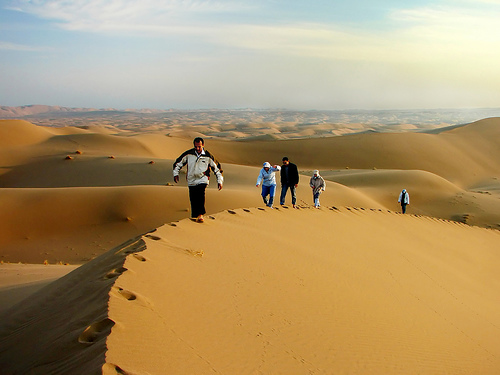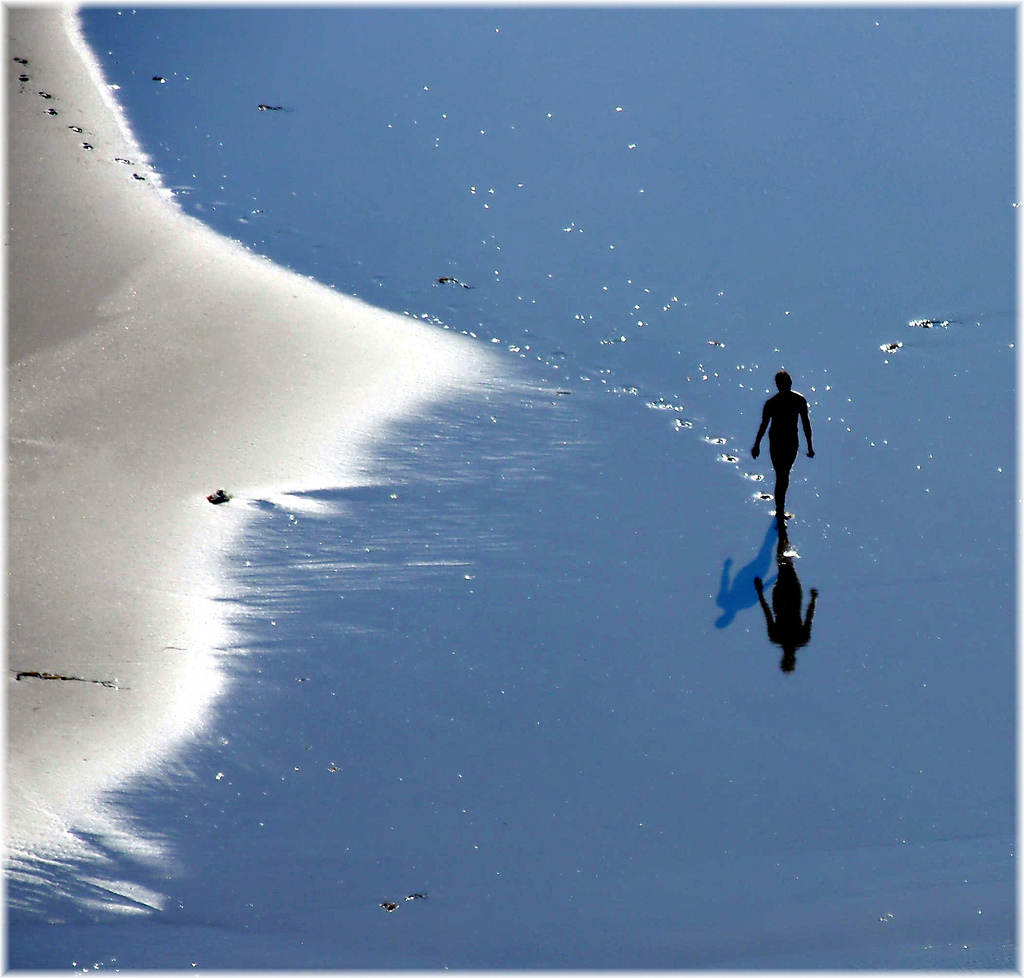In today’s race-focused world, it’s a refreshing change to downshift a gear or two to really slow travel to make the most of a new destination. I’m a big advocate of using your feet to see a place, be it city or countryside. After all, our feet were invented long before trams, buses or taxis.
Vagabondish is reader-supported. When you buy through links on our site, we may earn a small affiliate commission. Read our disclosure.
I’m not, although the title might sound that way, advocating the idea of circumnavigating the world entirely on foot. There are crazy adventurers who do such things and we can leave the record-breaking up to them. My idea of really slow travel is that you pick small areas of your destinations that you are able to examine by foot, and then start walking.

Walking at Dusk, Maldives © notsogoodphotography
Why You Should Walk on Your Travels
See More
Obviously this is the number one reason, although some people might complain that by walking they’ll see less, since they can’t get around to the same sightseeing hotspots that the tourist circuit buses visit. My tip is that you don’t want to get around to those twenty sightseeing hotspots.
Pick a few places you’d really like to see and that are within walking distance of each other. Take your time to stroll along the streets that join them and you’ll discover everyday aspects of life in your destination that you can’t see from a bus. Watch people going to work, heading out shopping, fighting with their girlfriend (on my last trip to Paris, I witnessed a passionate argument between a girl and her presumably soon-to-be ex-boyfriend).
Every good trip needs a balance between tourist attractions and the real deal.
Smell the food in the restaurants or cafes where the locals eat, check which pub is most popular, or even find a shopping bargain as you window shop. Every good trip needs a balance between tourist attractions and the real deal.
Get Physical
Walking is healthy and it makes you feel more alive. Perhaps you are usually stuck in an office cubicle, or tend to spend your spare time in front of the TV. Walking doesn’t require a high level of fitness, and if you feel tired you’re always allowed to take a rest or slow down. Heck, if you somehow really exhaust yourself, you can even hop a bus for the return leg. There are no rules.
My experience is always that a place feels—how can I put it—more exhilarating, when you see it on foot. There’s something about getting around entirely under your own steam, no doubt combined with a healthy dose of exercise-fueled endorphins, that leaves a special memory of a trip where you spent a lot of time walking.
You Won’t Get Lost So Often
Seriously, one of the main reasons I started spending so much time on foot when I travel is I have a hard time reading a map. And if I get in a bus or, even worse, any kind of underground train where I can’t even see the terrain I’m traveling over, then my sense of direction really takes a beating.
At walking pace, even I always know where I am on a map. You don’t hurtle past a bunch of road signs at such a pace that you can’t read them; you can even stop and try to decipher them if they’re in a tricky language.
Take Better Photos
Good photography is often about time. (And light, but that’s harder to control). Being on foot gets you around more slowly and you suddenly have time to wait for the perfect angle. You’ll see a whole lot more angles by walking across a city than by merely walking from the bus stop into the museum and back.
Better photos are also more unique photos. Photograph the everyday aspects that you walk past: the people, the houses, the little touches that are different from home. I had a couple of days walking around Irkutsk in Russia and now have a great collection of photos of the doors of old Russian wooden houses, and I love it!

Walking the Sand Dunes, Iran © Hamed Saber
Planning Your Really Slow Travel
There are two ways to do some really slow travel: either by criss-crossing a city on foot or by hiking in the countryside. Both are improved with a little bit of forward planning.
City walking:
Make sure you have a good map. Often the local tourist bureau can supply the best map, so if you can’t find one before you arrive, don’t despair. Just make sure you have one before you head off on your big stroll.
Don’t be strict about the route you plan to follow. Be prepared to wander down interesting side streets and alleys, and allow time for detours into churches, museums or shops along the way.
Wear good walking shoes, too. I’m not talking trainers: they’re for the gym. In fact, I wear my hiking shoes when I hit a city, but they’re the kind that look neat and tidy enough for a cafe at lunch time too. Take a small daypack – big enough to stow any spontaneous purchases, though.
Country walking:
Be prepared. I had a fantastic walk one Easter along the south-western edge of England, from Land’s End back along the coast to the Minack Theatre. But it would have been rather miserable if I hadn’t packed enough water and food, and added my raincoat, a good map and of course, my camera.
Most country hiking is best considered in advance of your trip, because you might have to rely on infrequent bus connections to your walk’s start and end points. Talk to locals once you get there to confirm which directions make for the most interesting walks.
Tie Up Those Shoelaces And Go!
Convinced yet? The most common counter-argument I hear is that you don’t have time to do this on your precious few vacation days. I’d argue that you don’t have time not to.
Remember that travel is not about collecting entry tickets, it’s about experiences, and I guarantee that you’ll have a more memorable experience if you travel really slowly. Try it and see!


